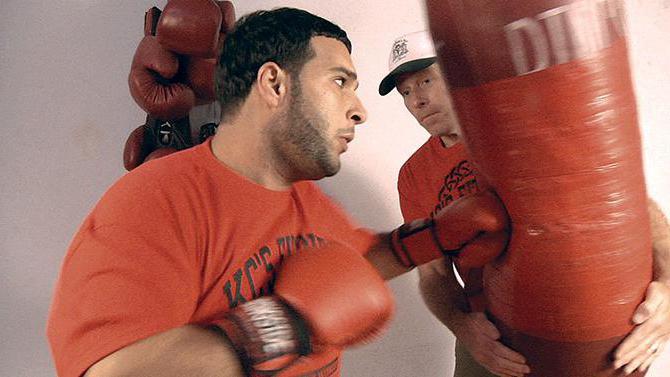The very concept of “weight categories in professional boxing” did not appear immediately. Initially, fighters of even diametrically opposite weight and physical shape entered the ring. Later it became apparent that heavy athletes won in most cases for a number of natural reasons. Therefore, it was decided to introduce division into this sport by weight categories.
Weighing procedure
Weighing procedures in professional boxing are approached with great responsibility. The athlete is required to comply with the weight, otherwise he will not be allowed to fight. The process of control weighing of a professional boxer takes place on the day of the fight, not earlier than 24 hours and not less than 8 hours before it begins. Typically, simple electronic or medical scales are used to measure severity.
To determine the kilograms as accurately as possible, it is required that the boxer undergo the weighing procedure only in swimming trunks. Weight categories in professional boxing are determined by special people - supervisors. The time for weighing is determined by the promoter. If the boxer's weight indicators do not correspond to the category that was declared before the competition, he is given 60 minutes to bring his body to the required indicator.
If the boxer does not reach the required kilograms, two conditions are announced. The first condition is that the match is not held. The second condition is that the fight is held, but even if this fighter wins, his rating will not be increased.
There are such weight categories in professional boxing:
- the lightest;
- easy;
- middle;
- heavy;
- heavyweight.
Light weight
In professional boxing, lightweight fighters are divided into 6 subcategories:
- Minimum, where the severity of each athlete should not exceed 47.63 kg (105 pounds respectively).
- The first is the easiest. Here, the fighter should not exceed 48.9 kilograms on the scales (108 pounds).
- Lightest, with a maximum weight of 50.8 kilograms (or 112 pounds).
- The second easiestwith a maximum severity of 52.16 kg (115 pounds respectively).
- Lightest. Her maximum weight is 53.53 kg (or 118 pounds).
- The second easiest. Here, the maximum allowed rate on the scale is 55.22 kilograms (122 lbs).
A light weight
Fighters of this category are also divided into internal subcategories. There are 3 of them in light weight. The lightest fighters of this category have a weight of not more than 57.15 kg (or 126 pounds) and are considered lightweight.
Average weight
The average weight in a box is divided into 5 subcategories:
- The lightest among them is the first welterweight, the severity of which does not exceed the mark of 63.5 kg (140 pounds).
- The welterweight, located next to it, has a maximum of 66.68 kg (or 147 pounds).
- The first average subcategory requires that the maximum indicator on the scale does not exceed 69.85 kilograms (154 pounds, respectively). If the fighter's severity is between 69.85 and 72.57 kg (160 pounds), then he is ranked in the middle subcategory.
- The most difficult medium subcategory is the second medium with a maximum severity score of 76.2 kg (or 168 pounds).
Heavy weight (boxing)
The most popular segment. Heavyweights fights have always been of the greatest interest and had the highest ratings.
The heaviest boxers fall into the heavy category and are distributed according to three subcategories:
- The weight of the light heavyweight subcategory should not exceed 79.4 kg (175 lbs).
- Athletes whose severity is up to 79.4 kilograms (200 pounds, respectively) fall into the first heavy subcategory.
- If a boxer weighs 91 kg (or 200 pounds) or more, he is considered a heavy subcategory.
Heavyweight Boxing
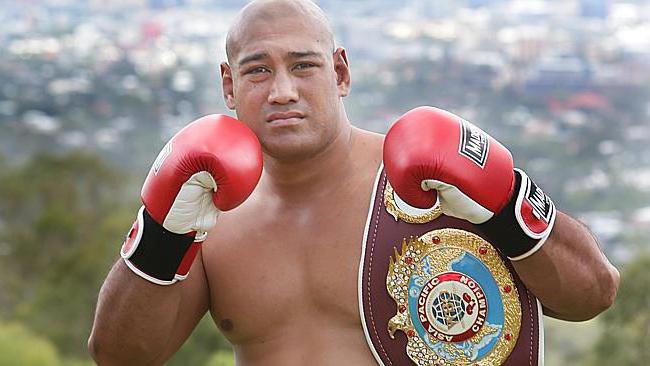
However, it is worth noting that heavyweights in boxing exist only among amateur boxers and have indicators equivalent to professional boxers in the heavy category, the maximum weight of which exceeds 91 kilograms (or 200 pounds)). We hope that with this article we have helped you figure out exactly what weight categories exist in professional boxing.
The outgoing 2015 in boxing was not like all the previous ones. The world finally saw mayweather-Pacquiao fight. But after that, the planet did not stop spinning. In addition to the most money battle in history, we have witnessed excellent fights in a variety of weight categories. The heavyweight division was no exception. Of course, the main event of the heavyweights took place on November 28 in Dusseldorf. But besides the defeat of the great champion, there was something to pay attention to.
It should be noted right away that it is impossible to draw up a rating that would suit everyone. Therefore, this New Year's “hit parade” is nothing more than the opinion of the author. So let's go.
10. Vyacheslav Glazkov (Ukraine, 31 years old)
In 2015, Glazkov spent 2 fights - in a boring confrontation, he defeated Steve Cunningham by a decision of the judges and knocked out at that time 11 defeats of Trinidad Curtson Manswell. However, the main events in the career of Vyacheslav will occur in the new year. After Tyson Fury washed away the IBF in the toilet, the title became vacant. And at the very beginning of 2016, the Ukrainian will face the first champion fight in his career - against the American Charles Martin, for this very IBF belt. Well, we wish good luck to Glazkov.
Weak opposition, lack of champion fights.
9. Bermaine Stevern (Canada, 37 years old)

Stevern became known to the general public in 2013, defeating Chris Arreola by unanimous decision. This was followed by a rematch in which Stevern already knocked out Arreola and won the vacant WBC title at that time. In early 2015, Bermain held the currently-dominant fight of his career, losing his newly won title in a duel against Deontay Wilder. At the end of the outgoing year, the Canadian returned to the ring, defeating the little-known Derrick Rossi.
Unlike Glazkov, he defeated serious opponents and took part in champion battles.
8. Bryant Jennings (USA, 31 years old)
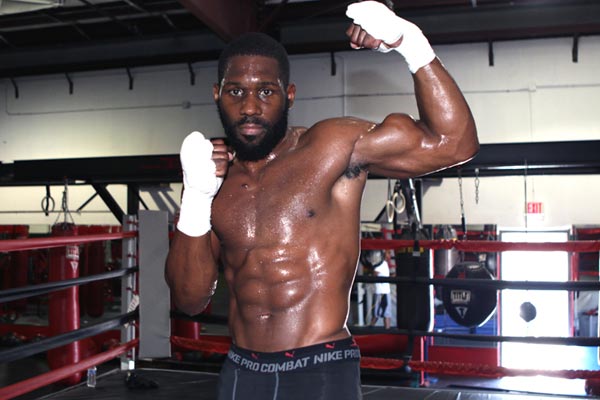
The American made his debut in the pro ring recently - in 2010, and already in 2012 he was awarded the title "Prospect of the Year" according to the authoritative version of Sports Illustrared. In 2014, he spent 2 fights - against the notorious Arthur Shpilki and Mike Peres - both won, and had at the end of the year an ideal track record of 19-0 (10 knockouts). The outgoing 2015 was definitely the worst in Jenings' career. At first, the American lost to Vladimir Klitschko, and last weekend ahead of schedule and in all respects was defeated by one Cuban puncher (about him below). However, Bryant Jennings is relatively young for the heavyweight division and has excellent physique for a successful career continuation.
Unlike Stevenn, he fought with Wladimir Klitschko and held out the entire battle distance.
7. Kubrat Pulev (Bulgaria, 34 years old)

The Bulgarian spent 2015 successfully, judging by the result - two victories in two fights. However, the rivals of “Cobra” can not be called top-end. Suffice it to say that Kubrat won his last victory over Maurice Harris, who has almost the same number of victories and defeats on his track record - 26 versus 21. Of course, defeating such opponents will not bring Pulev closer to champion titles. But at the same time, after a knockout defeat from Wladimir Klitschko in 2014, it was quite normal to withstand a certain pause and return to the big box with a more confident fighter.
Unlike Jennings, he not only boxed with Klitschko, but for the first time in many years he was able to seriously shake the champion (even though he eventually lost ahead of schedule).
6. Anthony Joshua (Great Britain, 26 years old)

Olympic champion of London. The youngest (and therefore the most promising) boxer of our rating. The only representative of the top 10 who completed all their fights ahead of schedule. It has all the qualities of a future super-champion: strong, fast, has good dimensions (almost 200 cm tall, arm span about 210 cm), suitable for battles in excellent physical shape. He was a sparring partner of Vladimir Klitschko and received the warmest reviews from the Ukrainian. However, the British rivals are selected, to put it mildly, carefully. In the last match with the most serious opponent in his career, Dillian White (I'm sure not everyone knows this), Joshua experienced certain problems, although he knocked out a compatriot in the 7th round.
Unlike Pulev, he is an Olympic champion, and also has not yet lost in the professional ring.
5. Louis Ortiz (Cuba, 36 years old)
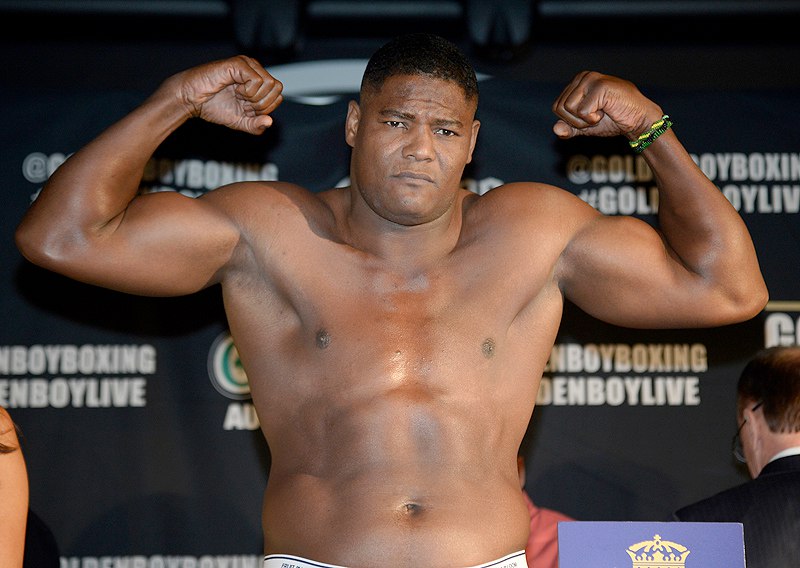
Nicknamed "Real King Kong" - the interim WBA champion - is a real threat to all, without exception, the heavyweights of our time. Ortiz has an excellent school, having spent more than 360 fights in fans. He switched to professionals quite late - at 30. Of the 24 victorious battles, 21 completed ahead of schedule. It has in its arsenal a lethal blow from the left hand. With a rather large size, in the ring it looks very well-coordinated, it feels good at a distance, timely attacks and counterattacks. In addition, it is inconvenient for rivals, since it is left-handed. Of the minuses - he was disqualified for 9 months for using illegal drugs, and also never once spent in the ring all 12 rounds of the title fight.
2015 spent a shock, knocking out 3 rivals, the last of which was the aforementioned Bryant Jennings.
Unlike Joshua, he fought with serious rivals and defeated them.
4. Deontay Wilder (USA, 30 years old)
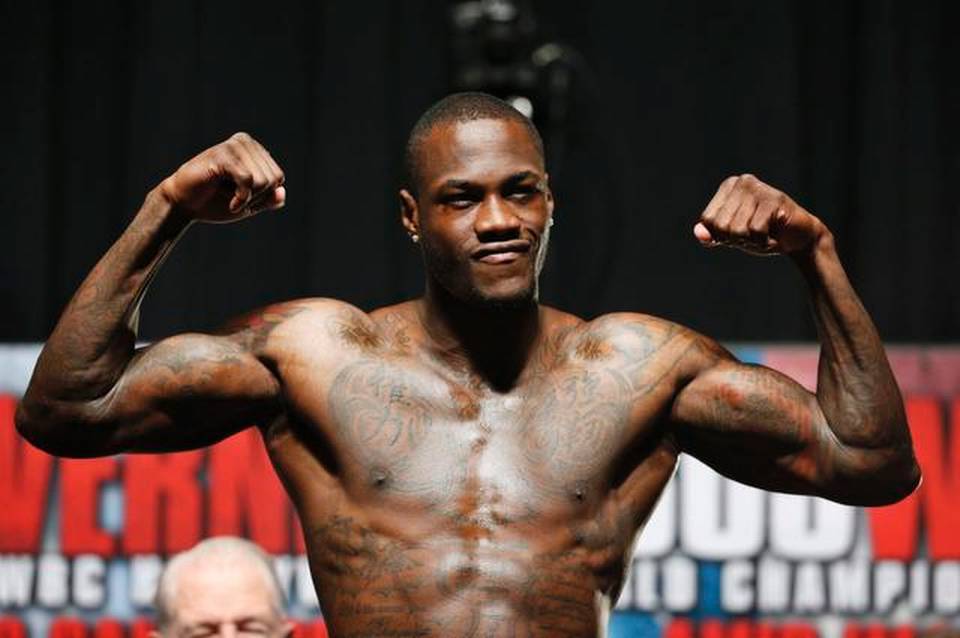
The Bronze Bomber is one of the most controversial heavyweight boxers of our time. A track record of 35-0 with 34 knockouts (Iron Mike himself could have envied), a belt of the world champion in the most prestigious version (WBC) - it would seem that what else is needed to be considered the best? The answer is simple - you need fights with serious boxers. Yes, Wilder destroys one opponent after another. True, these rivals - whether it be American Jason Gauern or Frenchman Joan Dupa - cannot boast of anything serious. Wilder’s strongest rival today is No. 9 in our ranking of Bermaine Stevern. And that fight lasted the whole distance. And this despite the fact that the Canadian is far from the most formidable boxer of the division. In general, boxing fans have a lot of questions for Wilder. We are waiting and hoping that in 2016 the American will have at least one fight with a serious opponent (preferably, with any of this rating from 1st to 6th place)
Unlike Ortiz, owns a full-fledged world champion belt, and also has a more impressive track record.
3. Tyson Fury (Great Britain, 27 years old)
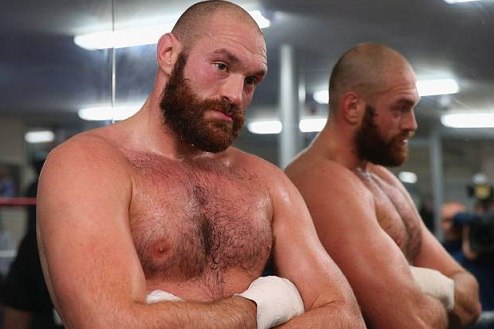
The main troublemaker who reigned in heavyweight for more than 10 years. The man who created the sensation, which the world has not seen since the first defeat of Mike Tyson in his career. A gypsy king who does not recognize authority. Tyson Fury burst into a boxing elite after just one bout. But what. The Irishman defeated Vladimir Klitschko himself. He won not by accidental strike and not by cutting or stopping the battle. He won confidently and calmly, boxing the champion and sending him into a deep depression. For all its clumsy and uncoordinated nature, Tyson Fury is an insanely talented boxer by nature. Having impressive dimensions, he very skillfully copes with them and looks plastic and relaxed in the ring. At the same time, we will not make hasty conclusions and put the gypsy fighter at the head of the rating. Just wait for revenge.
Unlike Wilder, he defeated Vladimir Klitschko.
2. Alexander Povetkin (Russia, 36 years old)

The Russian Knight noticeably changed after the only defeat two years ago (I hope everyone remembers from whom). In the four subsequent battles, Povetkin ahead of schedule defeated far from the most passing boxers - Charr, Takam, Perez and Vakh. Alexander became a more prudent fighter, acting combinationally and bringing his fights to early victories. We can say that now Povetkin is experiencing a second youth and is ready for new achievements. By the way, the change of coach went to Alexander's favor. With Ivan Kirpa Povetkin so far only wins, and wins by knockouts. We will wait for a new champion fight of our Russian Knight. One of the most likely rivals is Deontay Wilder (the one with a scary list of knockouts). It seems that such a fight will attract the attention of fans from all over the world and will become an adornment for the heavyweight division.
Unlike Fury, long ago in big boxing, fights with the best and has more than one significant victory over famous fighters.
1. Vladimir Klitschko (Ukraine, 39 years old)

I am sure that many (if not most) will not agree with the first number in our rating. This is everyone’s right. I repeat, this rating is nothing more than the opinion of the author. It makes no sense to list all the regalia of Vladimir Klitschko - everyone knows them so well and even got tired of the constant victories of the Ukrainian. Perhaps Vladimir himself was tired. Whatever one may say, at 39 years old it is difficult to seek motivation for the next new rival, no matter what they say about this. No matter how the revenge of Klitschko Jr. with Fury ends (they say it will be held in the UK in 2016), Vladimir and his older brother have already secured their places in the international boxing hall of fame. No, I’m not an ardent fan of the Klitschko brothers and don’t quite share some of the things that they do (or did) in the ring. However, I urge everyone to look at things objectively, throwing aside all political aspects and leaving only the sports component at the head of our rating. Still, we have a sports “hit parade”.
Unlike everyone else, he has not lost in the ring for more than 11 years, spending most of his time title fights and defending his countless belts.
This is our rating of boxing heavyweights at the turn of 2015-2016. Surely everyone will have their own comments and suggestions regarding the distribution of places, and, perhaps, the inclusion in the list of completely different boxers. Ruslan Chagaev, Derek Chisora, Lucas Brown, Andy Ruiz, Malik Scott, or even Antonio Tarver - each of these (and possibly not only these) heavyweight teams can claim a place in such a rating. Well, our rating turned out just like that. In the new 2016, I would like to pay special attention to one interesting character who nevertheless returns to big sport.
Bonus: David Haye (Great Britain, 35 years old)
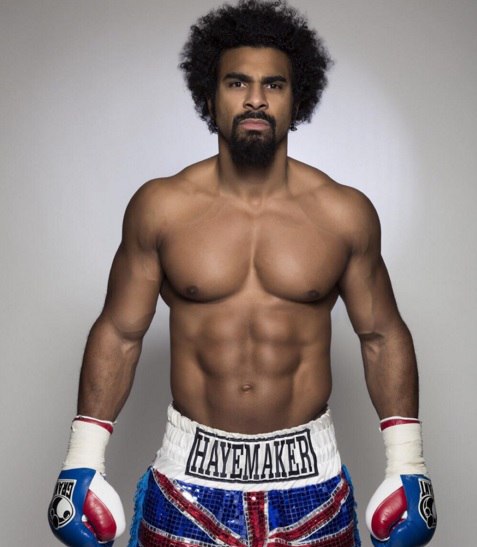
Yes. Finally, this will happen in 2016. Haymaker will return to the ring. The date is already set - January 16, and the rival is the Australian Mark de Mori. 3.5 years have passed since last battle David Haye when he knocked out compatriot Chisoru. All this time, Heimaker was recovering from injuries, was trying to punish the gypsy king Fury in the ring and just enjoyed life. I think no one will argue, Haye definitely needs a heavyweight right now. Hay is the person who is able to cause problems to any of the above boxers, regardless of the position of our rating. Hay markedly gained muscle mass and is in excellent condition. Adding to this a refined technique, plasticity and natural reflexes, monitoring the return of the Briton becomes even more interesting.
This is an arbiter-controlled boxer weight limit. Within its framework, an athlete has the right to take part in official competitions in the ring. The final weigh-in is carried out immediately before the start of the tournament or the battle on electronic scales. Where boxers become without outerwear, or even completely nonsense, bashfully covering themselves with sheets. These figures give judges the right to determine their weight categories for participants.In 1936, for the first time in the USSR, a battle was fought for the title of absolute champion of the country, excluding categories. Heavyweight Viktor Mikhailov and light heavyweight Nikolai Korolev came together in it. Confident dinner won Korolev - 7: 2. He won a year later - 3-0.
Boxing without gloves
Sports historians argue that at the beginning of its history, boxing was only professional, without the current clear division into categories. He did not, however, have much else - gloves, helmets, caps, even the now so familiar ring with ropes.As for the fights, they were held almost without rules: two people, often of different heights, weights and physiques, converged where they agreed, and began to box with their bare hands. Such boxing, or rather, a banal men's fight, could last for hours, ending with a victory that delivered a decisive blow to a more enduring opponent.
How much do you weigh?
This situation lasted until the end of the 19th century, until the audience and the organizers finally understood: in a fight between a boxer weighing 100 kg and his opponent weighing 75 kg, the first one will surely win. This means that it makes no sense to arrange public commercial battles and accept cash bets on them.Exist, as before, bringing down fighters of different weights and levels in an improvised ring, was no longer possible. So the concept of “weight category” was born. At first there were only two - light and heavy, then it became eight, ten. And all of them were used only in pro competitions.
Yes, actually, amateur boxing at the dawn of the development of sports for people with strong fists and jaws, no one knew. It arose only at the beginning of the last century, making its debut at the 1904 Olympics. And to how many athletes the introduction of categories saved, perhaps health and life, story Boxing is silent.
Professionals
Nowadays, professional boxers (that is, they get a lot of money and do not play for their country at the amateur world championships and the Olympics) compete in 17 weight categories. Or just in 17 different weights.The lightest of these is the weight of the pen, which equals 105 pounds (47.627 kg) in the international measurement system. The most impressive is the heavyweight, it fights guys with a weight of over 200 pounds. For reference: 1 kilogram is 2.2 pounds.
Categories called so funny: the weight of the “feather”, “flies” and “rooster” is a tribute to traditions and a pun. In the English original, they sound like this: featherweight - weight category up to 105 pounds, flyweight - up to 108 and bantamweight - up to 112.
Lovers
Once they had 12 categories, but a few years ago, for the sake of, apparently, television, only ten remained. Minimum - up to 49 kg (lightest weight), maximum - over 91 kg (heavy).Women's boxing
In Olympic London 36 women - lovers competed in three categories - in the weight of "flies" (48-51 kg), light (56-60 kg) and medium (69-75 kg).To equalize the capabilities of rivals and their chances of winning, weight categories in boxing were introduced. As far back as the beginning of the 19th century, there was no detailed separation of athletes by rank. This led to the fact that the boxer of a large physique had a potential advantage over a lighter opponent. Physical data largely determined the initial advantage of one athlete over another. Weighted discrepancies were dangerous for small boxers and unpleasant to the audience.
Ranking Stages
Fist fights have been known since ancient Greece and Rome. This sport was present in the program of antique Olympic games.The static battles of the two competitors were pretty fierce. Sometimes they ended in the death of one of the participants.
Fights with a minimum set of rules became the prototype of sports boxing, born in England in 1719. Then James Figg (considered the first boxing champion in the history of England) founded a sports school in London - the boxing academy. Fights were fought with bare fists. The blows were delivered before one of the fighters got knocked out or until it fell from powerlessness.
The first universally accepted boxing rules were created by Jack Broughton, Figg's successor. They appeared as a result of the shock that Broughton suffered in connection with the death in the ring of one of his opponents (George Stevenson). The Broughton Rules were published in 1743 and eventually formed the basis of the rules of the London prize ring.
But as early as the beginning of the 19th century, there were no standard discharges. Only in 1823, information was recorded on the restriction of admission to participation in boxing matches. The minimum weight ranged from 154-168 pounds (69.9-76.2 kg).
The rules of the London prize ring (1838) stated that national and world titles became recognized only when certain standards were agreed. At the end of the 19th century, the names of such categories appeared: heavy weight, average weight, light weight, featherweight, light weight. Actually the weight categories in boxing were determined in 1909 by the National Sports Club in London. They were enshrined in 1920 by Walker Law and recognized by the New York State Athletic Commission (NYSAC). In the 20th century, category names appeared with the additional definition of “second” (for example: second average weight).
In the 1960s, the rules for moving boxers between different categories were facilitated. However, after the split between WBC and WBA, it was not possible to unambiguously standardize the categories in professional boxing. Only the weight measurement in pounds was recorded, reflecting the historical dominance of the UK and the USA in this sport.
Description of weight categories in boxing
The number of categories and their indicators have changed over the years. Today, in professional and Olympic (amateur) boxing, the basic ranges in the limit indicators are standardized. There are 17 categories for professionals and 10 for amateurs. Weight categories in professional boxing are agreed on in all four versions - WBA, WBC, IBF, WBO.
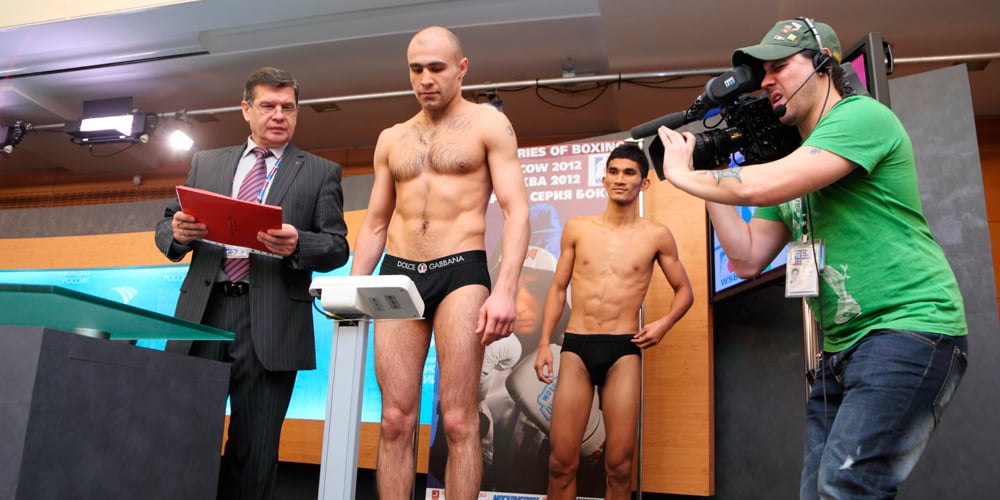
Distinctive weights are young men, juniors, women and adult men. The names of many categories in these qualification systems converge. For example: lightweight, lightweight, welterweight, average weight, light heavyweight, heavyweight. However, in the professional classification, names are accepted that are absent in the amateur. For example, the minimum (up to 47.627 kg), the second lightest (up to 55.225 kg), featherweight (up to 57.15 kg), the second featherweight (up to 58.967 kg), the first medium (up to 69.85 kg), the first heavy (up to 90.718 kg).
Sometimes the names of the categories coincide, but the indicators differ markedly. So, the lightest weight is determined by various numbers. For professionals, it is measured in the range from 48.989 kg to 50.802 kg. For lovers - 49-52 kg. In the professional classification, traditional analogues are accepted for some names. For example, the minimum weight is “feather” (up to 47.627 kg), the second lightest weight is “super fly” (up to 52.163 kg), the lightest weight is “cock” (up to 53.525 kg).
But the heavyweight has almost identical indicators. For professionals, it starts with a mark of over 90.718 kg, for amateurs - over 91 kg. Among professionals, they try to avoid the concept of “heavyweight”.
![]()
Category and indicators of sports achievements
The Olympic program of the competition is built in such a way that first lower-level athletes enter the struggle, and then alternately the higher ones. At the final stage, the final fight of the heavyweights is held. In all versions, heavyweight is most attractive to athletes. Victory in this category has utmost prestige and is highly appreciated by the audience.
In professional boxing, weight is determined with greater accuracy. In amateur boxing, the limits of the category are rounded to the nearest kilogram. Amateur classification is closer to natural data.
The biggest achievement in boxing is considered the title of "multiple champion". It is awarded to those boxers who have won champion titles in several categories. In this regard, Henry Armstrong remains one of the most legendary boxers. He submitted to featherweight, lightweight and welterweight for a short period.

The same athlete can hold fights in different ranks. Experts note the trend of boxers moving from a lower category to a higher one. This is due to the processes of physical aging.
Weight categories play a decisive role in the organization of fights and the choice of their participants. The confrontation of athletes in rank are in the same category. This parameter does not guarantee complete prelaunch objectivity, because other physiological features (for example, arm span) are ignored. Perhaps in the near future they will also be standardized.
Within the walls of the YourRevolution1905 club, we are ready to professionally help you learn how to box or level up as a boxer. Entire sets of exercises developed by certified specialists, nutrition recommendations, “smart” weighing, classes conducted by the Master of Sports in boxing and much more, all this will help you achieve your goal as efficiently as possible. For the most effective and fastest result, you can engage in personally (one on one with the trainer) or in mini-groups up to ten people. Come to our classes and we will help you become the best version of yourself!



